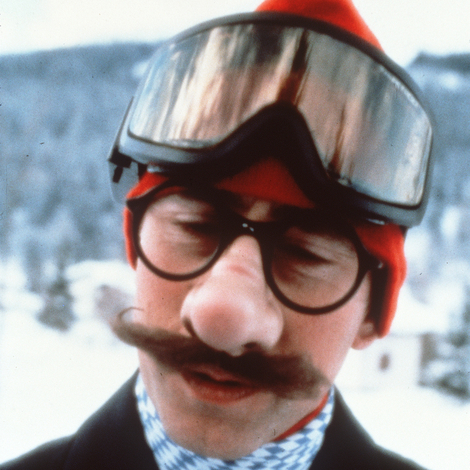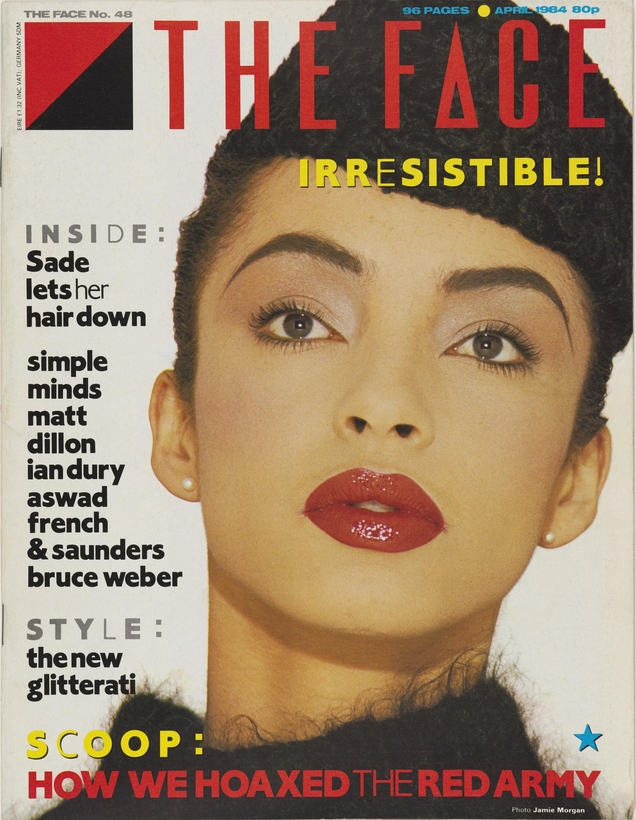Magazines that hit the magic spot in readers’ enthusiasm and devotion are a result of right time, right place, and the right captain at the helm. The New Yorker, founded by that irascible crew-cut genius Harold Ross, was launched in 1925, the same year as The Great Gatsby, a frothy era syncopated to the sound of jazz, Tin Pan Alley, and the pop of champagne corks. Had the raised-monocle urbane magazine launched a decade later, during the Depression, it wouldn’t have carried the same chorus-line kick. It might not have gotten off the ground at all.

The planets were racked up in similar alignment for the creation of The Face, a monthly culture-and-style magazine for clever clogs out for fun.
The right time: 1980. Punk fervor had lost its thrash and snarl, slumping into an early grave with the overdose death of Sex Pistol Sid Vicious, in 1979. Pogoing on the club floor was passé. Inspired by David Bowie’s 1970s “Berlin trilogy” (Low, Heroes, The Lodger), the ascent of synthpop was nigh, dancers and other denizens of the night sent into motion by the contoured sonic waves and plaintive vocals of Human League, Duran Duran, Pet Shop Boys, and so many other moussed fops.
The right place: London, whose club kids, scene-sters, and pro-am exhibitionists would soon be shucking the bondage gear of punk for the pirate dandyism and Regency finery of the New Romantics or the gender-bending harlequinade of Boy George and Leigh Bowery.

The right skipper: founding editor Nick Logan, a former editor of the raucous, indispensable New Musical Express (N.M.E.) who had tired of the constricted format of rock journalism and sought a wider wingspan. He brought in word slingers such as N.M.E. stars Julie Burchill and then husband Tony Parsons, the prodigiously talented Jon Savage (later the author of the magisterial history of punk, England’s Dreaming), and fresh byliners such as New York correspondent James Truman, investigating such art-world conundrums as “Why do painters have perfect teeth?” It wasn’t enough, however, for the writing to be snazzy and swingy. The eyes were hungry for more. Right time, right place, and right editor were in place, but there was one thing missing.
The right look.

The early issues of The Face were patchy and punchy, finding their way, but with the arrival of designer Neville Brody the magazine sorted itself out and assembled a graphic identity through tireless experimenting and tweaking with fonts, layouts, symbols, and logos that looked backward to Bauhaus and forward to the cybernetic future. The photography took full advantage of this improv mix with its own bucking-bronco energy and insouciance. A decade after The Face’s debut, destiny had a special treat in store. With a quiet thunderclap the magazine found its muse, its freckled Mona Lisa, its gawky Gidget: teenage model Kate Moss.
Grinning from the cover of the July 1990 issue under a birthday-party crown of feathers, Moss became the defining face of The Face. The cover shot was by Corinne Day, who would capture the many moues of Moss in indelible spreads such as “Heaven Is Real” and “Borneo,” the latter featuring the model posed on a beach in bikini and snorkel, an homage to Ursula Andress in Dr. No.

A more sedate portrait of Kate Moss reigns over the exhibition at the National Portrait Gallery titled “The Face Magazine: Culture Shift,” which cracks open the archives to feature more than 200 images from its pages, a mix of famous faces (unibrowed Liam Gallagher of Oasis) and fizzy antics, such as Elaine Constantine’s hilarious snap of three girls on runaway bikes freaking out with yowling abandon—whee! Accompanying the exhibition is a catalogue including interviews with the magazine’s main players and lavishly illustrated with portraits of Moss, Bowie, Kurt Cobain, and that wee Australian songbird who won all our hearts, Kylie Minogue. It’s all a piercing reminder of what lively enterprises magazines could be before the digital consultants and algos muscled in.
“The Face Magazine: Culture Shift” is on at the National Portrait Gallery, in London, until May 18
James Wolcott is a Columnist at AIR MAIL. He is the author of several books, including the memoir Lucking Out: My Life Getting Down and Semi-Dirty in Seventies New York


